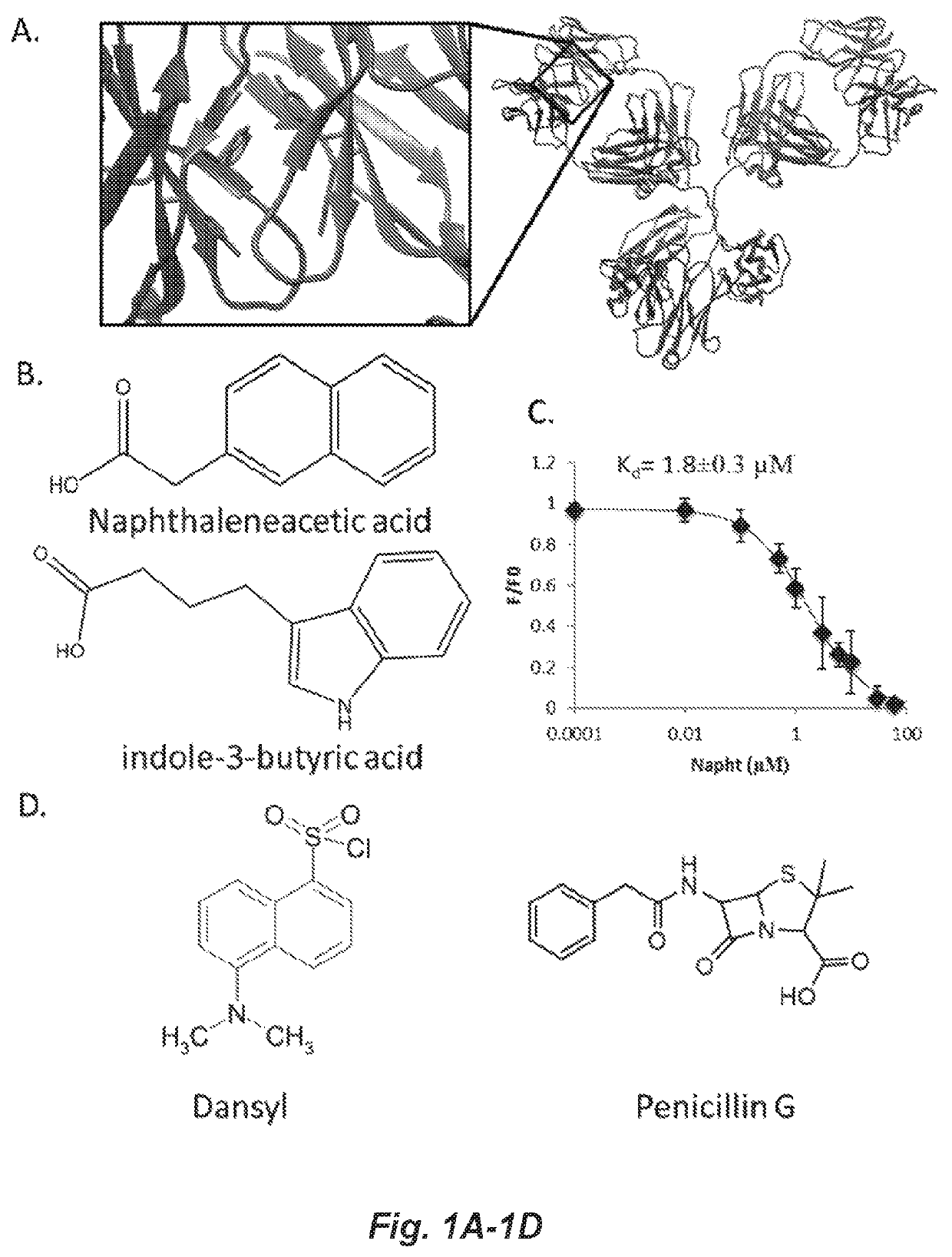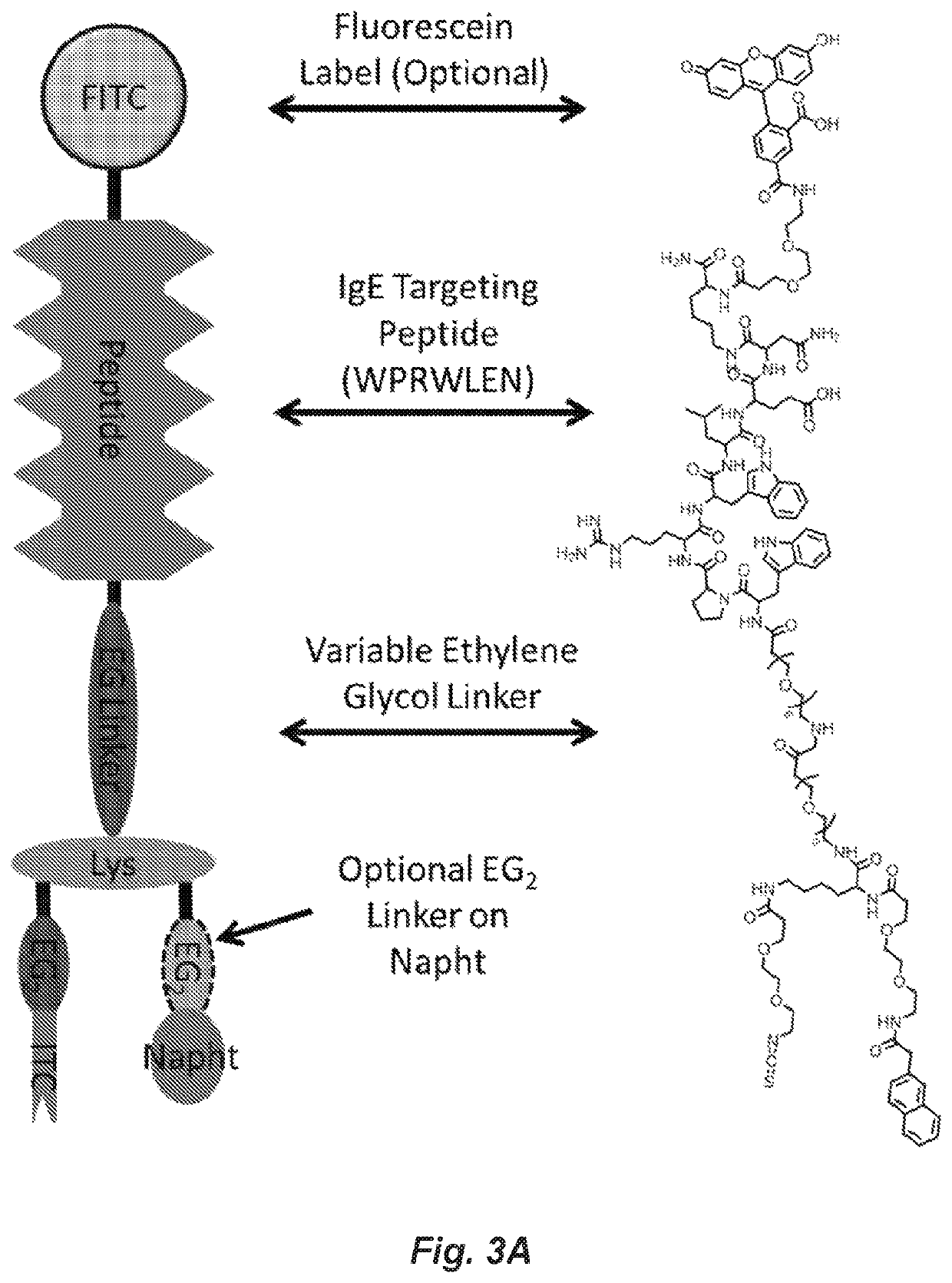Covalent heterobivalent antibody inhibitors and ligands
a technology of covalent heterobivalent antibodies and inhibitors, which is applied in the field of covalent heterobivalent antibody inhibitors and ligands, can solve the problems of complex techniques, detrimental to overall antibody activity, and not always feasible or practical
- Summary
- Abstract
- Description
- Claims
- Application Information
AI Technical Summary
Benefits of technology
Problems solved by technology
Method used
Image
Examples
example 1
cHBI Synthesis
[0235]All hapten conjugated molecules (cHBI, HBI or Hapten-ITC's) were synthesized using Fmoc solid phase peptide synthesis (SPPS) with several modifications. The basic peptide synthesis procedure is described briefly: molecules were conjugated to Rink Amide Low Loading Resin (Millipore), Fmoc-amino acids and Fmoc protected ethylene glycol spacers and Napht were dissolved at 4-fold excess in DMF, activated with a 3.6-fold excess of HBTU with 20-fold DIEA for five minutes prior to addition. DNP was added as DNFB and dansyl was added as dansyl chloride at 4-fold excesses in DMF with 20-fold DIEA. Activated Fmoc protected amino acids, haptens and Napht were reacted with amines on resin for 30 minutes for each step. After addition, resin was washed three times with DMF, and deprotected with 20% piperidine in DMF for 3 minutes three times. Following deprotection, resin was washed with DMF and DCM. Following Napht addition, the IvDdE group of lysine was deprotected using 2% ...
example 2
Pharmaceutical Dosage Forms
[0259]The following formulations illustrate representative pharmaceutical dosage forms that may be used for the therapeutic or prophylactic administration of a compound of a formula described herein, a compound specifically disclosed herein, or a pharmaceutically acceptable salt or solvate thereof, or a composition thereof (hereinafter referred to as ‘Compound X’):
[0260]
(i) Tablet 1mg / tablet‘Compound X’100.0Lactose77.5Povidone15.0Croscarmellose sodium12.0Microcrystalline cellulose92.5Magnesium stearate3.0300.0
[0261]
(ii) Tablet 2mg / tablet‘Compound X’20.0Microcrystalline cellulose410.0Starch50.0Sodium starch glycolate15.0Magnesium stearate5.0500.0
[0262]
(iii) Capsulemg / capsule‘Compound X’10.0Colloidal silicon dioxide1.5Lactose465.5Pregelatinized starch120.0Magnesium stearate3.0600.0
[0263]
(iv) Injection 1 (1 mg / mL)mg / mL‘Compound X’ (free acid form)1.0Dibasic sodium phosphate12.0Monobasic sodium phosphate0.7Sodium chloride4.51.0N Sodium hydroxide solutionq.s.(p...
PUM
| Property | Measurement | Unit |
|---|---|---|
| pH | aaaaa | aaaaa |
| molecular weight | aaaaa | aaaaa |
| pH | aaaaa | aaaaa |
Abstract
Description
Claims
Application Information
 Login to View More
Login to View More - R&D
- Intellectual Property
- Life Sciences
- Materials
- Tech Scout
- Unparalleled Data Quality
- Higher Quality Content
- 60% Fewer Hallucinations
Browse by: Latest US Patents, China's latest patents, Technical Efficacy Thesaurus, Application Domain, Technology Topic, Popular Technical Reports.
© 2025 PatSnap. All rights reserved.Legal|Privacy policy|Modern Slavery Act Transparency Statement|Sitemap|About US| Contact US: help@patsnap.com



